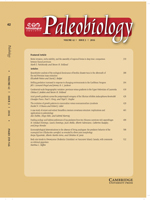Most of the mammalian diversity is known only from fossils, and only a few of these fossils are well preserved or abundant. This undersampling poses serious problems for understanding mammalian phenotypic evolution under a quantitative genetics framework, since this framework requires estimation of a group's additive genetic variance—covariance matrix (G matrix), which is impossible, and estimating a phenotypic variance—covariance matrix (P matrix) requires larger sample sizes than what is often available for extinct species. One alternative is to use Gor P matrices from extant taxa as surrogates for the extinct ones. Although there are reasons to believe this approach is usually safe, it has not been fully explored. By thoroughly determining the extant and some extinct Xenarthra (Mammalia) cranium P matrices, this study aims to explore the feasibility of using extant G or P matrices as surrogates for the extinct ones and to provide guidelines regarding the reliability of this strategy and the necessary sample sizes. Variance—covariance and correlation P matrices for 35 cranium traits from 16 xenarthran genera (12 extant and 4 extinct) were estimated and compared between genera. Results show xenarthran P-matrix structures are usually very similar if sample sizes are reasonable. This study and others developed with extant therian mammals suggest, in general, that using extant G or P matrices as an approximation to extinct ones is a valid approach. Nevertheless, the accuracy of this approach depends on sample size, selected traits, and the type of matrix being considered.
How to translate text using browser tools
13 May 2016
A case study of extant and extinct Xenarthra cranium covariance structure: implications and applications to paleontology
Alex Hubbe,
Diogo Melo,
Gabriel Marroig
ACCESS THE FULL ARTICLE

Paleobiology
Vol. 42 • No. 3
Summer 2016
Vol. 42 • No. 3
Summer 2016




